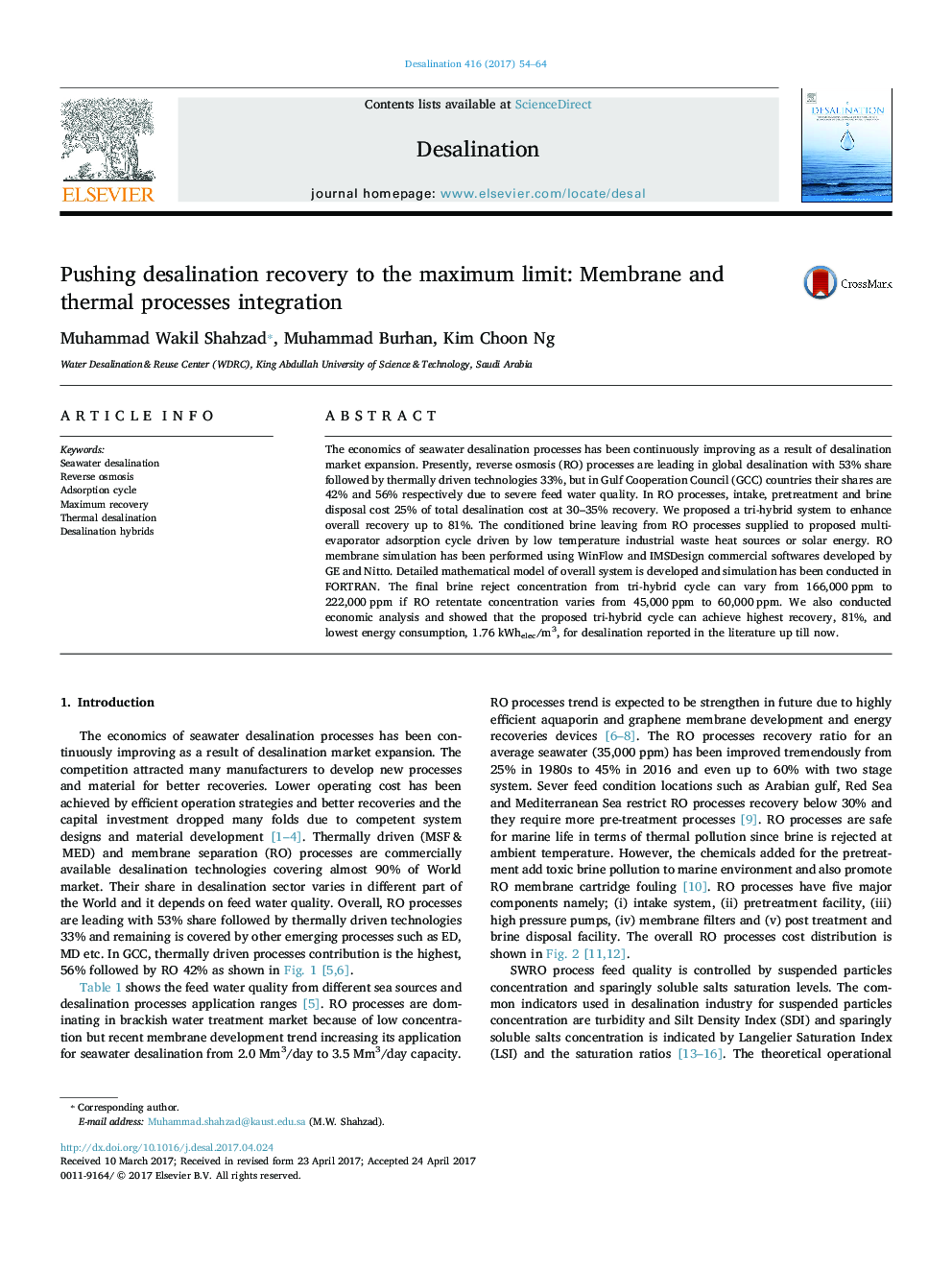| کد مقاله | کد نشریه | سال انتشار | مقاله انگلیسی | نسخه تمام متن |
|---|---|---|---|---|
| 4987710 | 1455279 | 2017 | 11 صفحه PDF | دانلود رایگان |
عنوان انگلیسی مقاله ISI
Pushing desalination recovery to the maximum limit: Membrane and thermal processes integration
ترجمه فارسی عنوان
باز شدن نمک زدایی به حداکثر حد مجاز: ادغام غشاء و فرآیندهای حرارتی
دانلود مقاله + سفارش ترجمه
دانلود مقاله ISI انگلیسی
رایگان برای ایرانیان
کلمات کلیدی
نمک زدایی دریایی، اسمز معکوس، چرخه جذب، حداکثر بازیابی، نمک زدایی حرارتی، هیبرید های نمک زدایی،
موضوعات مرتبط
مهندسی و علوم پایه
مهندسی شیمی
تصفیه و جداسازی
چکیده انگلیسی
The economics of seawater desalination processes has been continuously improving as a result of desalination market expansion. Presently, reverse osmosis (RO) processes are leading in global desalination with 53% share followed by thermally driven technologies 33%, but in Gulf Cooperation Council (GCC) countries their shares are 42% and 56% respectively due to severe feed water quality. In RO processes, intake, pretreatment and brine disposal cost 25% of total desalination cost at 30-35% recovery. We proposed a tri-hybrid system to enhance overall recovery up to 81%. The conditioned brine leaving from RO processes supplied to proposed multi-evaporator adsorption cycle driven by low temperature industrial waste heat sources or solar energy. RO membrane simulation has been performed using WinFlow and IMSDesign commercial softwares developed by GE and Nitto. Detailed mathematical model of overall system is developed and simulation has been conducted in FORTRAN. The final brine reject concentration from tri-hybrid cycle can vary from 166,000Â ppm to 222,000Â ppm if RO retentate concentration varies from 45,000Â ppm to 60,000Â ppm. We also conducted economic analysis and showed that the proposed tri-hybrid cycle can achieve highest recovery, 81%, and lowest energy consumption, 1.76Â kWhelec/m3, for desalination reported in the literature up till now.
ناشر
Database: Elsevier - ScienceDirect (ساینس دایرکت)
Journal: Desalination - Volume 416, 15 August 2017, Pages 54-64
Journal: Desalination - Volume 416, 15 August 2017, Pages 54-64
نویسندگان
Muhammad Wakil Shahzad, Muhammad Burhan, Kim Choon Ng,
